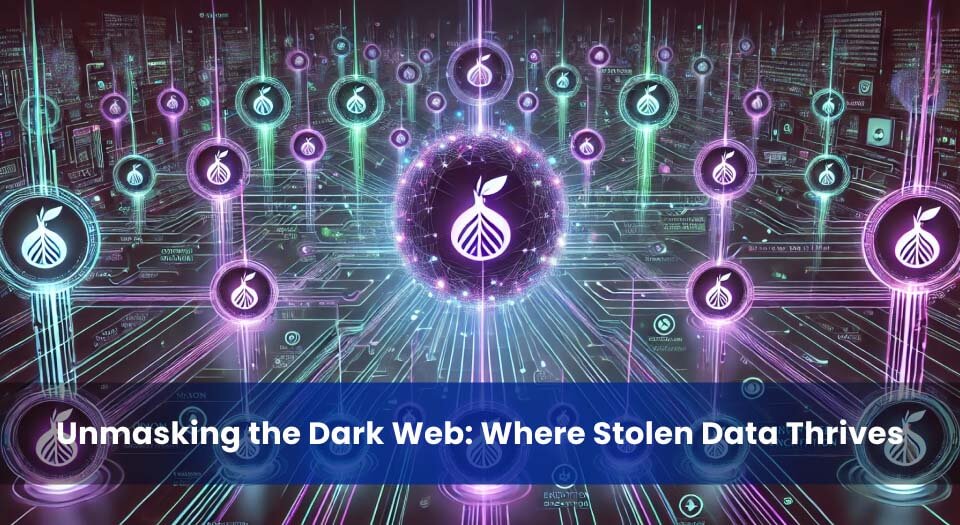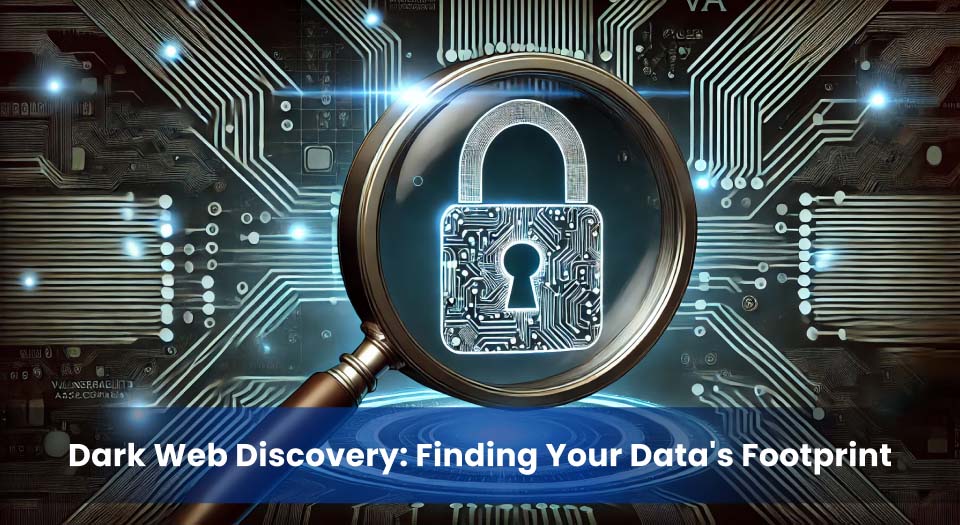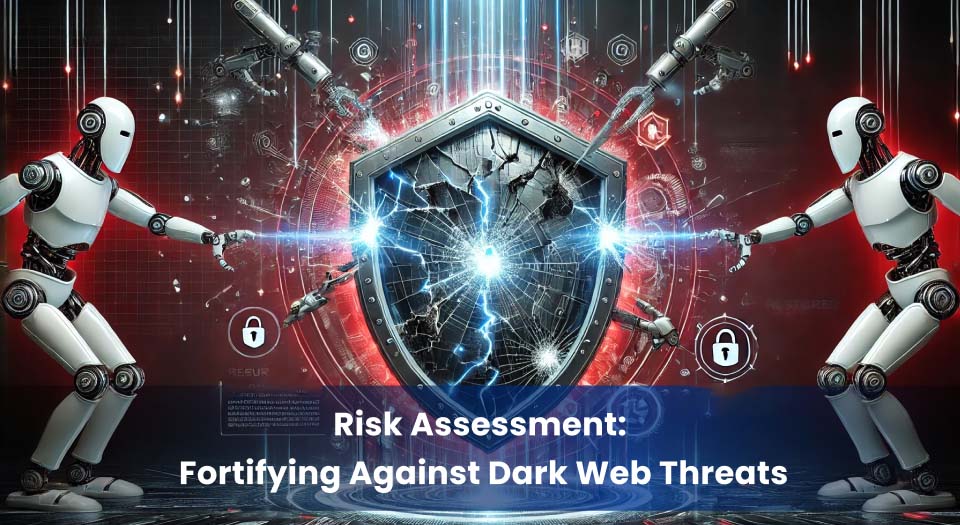
Dark Web Dangers: A Small Business Guide to Preventing Data Exposure
The dark web refers to a concealed part of the internet that is not indexed by standard search engines and requires special software to access, such as the Tor browser. While this hidden layer of the internet has legitimate uses, it is also frequently exploited by cybercriminals to trade stolen credentials, personal information, and sensitive business data.
For small businesses, the risk of data exposure on the dark web is growing at an alarming rate. Unlike large enterprises, many smaller organisations lack dedicated cybersecurity teams or comprehensive defence mechanisms, making them attractive targets for threat actors. Stolen login details, financial records, or client databases can appear on dark web marketplaces without the business even realising it.
This article aims to equip small businesses with essential knowledge to protect themselves. It will cover how to detect if your data has been compromised, conduct a cybersecurity risk assessment, implement preventative measures, and effectively respond to incidents if your data is found on the dark web. Through structured analysis and actionable insights, small business owners can strengthen their defences and reduce their exposure to some of the top cybersecurity threats small businesses face today.
| Layer | Description |
|---|---|
| Surface Web | Public web accessible via search engines |
| Deep Web | Password-protected or unindexed content (e.g., databases, intranets) |
| Dark Web | Encrypted, hidden networks used for anonymity; often linked to illicit activity |
Understanding the Dark Web and Its Risks

The dark web is a portion of the internet that is intentionally hidden and inaccessible through conventional browsers. Access requires specialised software such as the Tor browser, which anonymises user activity by routing traffic through encrypted nodes. While the dark web can be used for legitimate purposes, it is also a marketplace for illicit activities, including the sale of stolen business data.
Among the most commonly found data types on the dark web are email addresses, usernames, passwords, credit card numbers, banking details, and personally identifiable information (PII). In many cases, these details are harvested through phishing attacks, malware infections, or data breaches, and then sold or auctioned in underground forums.
Small businesses are often disproportionately affected due to their limited cybersecurity resources. Many lack formal security policies, rely on outdated software, or fail to conduct regular risk assessments. These factors increase their exposure to the top cybersecurity threats small businesses face, including credential stuffing, ransomware, and data theft. Once breached, the compromised information can quickly find its way into dark web marketplaces, often without the knowledge of the business owner.
Understanding how data reaches the dark web is the first step toward mitigating risk. The flowchart below illustrates the typical journey from breach to dark web sale.
How to Find Out If Your Data Is on the Dark Web

Detecting whether your business data has been exposed on the dark web is a critical part of any cybersecurity assessment. Businesses can take several approaches, including the use of dark web monitoring tools, manual searches through underground forums, or engaging professional cybersecurity risk assessment services that specialise in threat intelligence.
Free tools, such as Have I Been Pwned, allow businesses to check whether their email addresses or domains have appeared in known data breaches. While this resource is a valuable starting point—especially for small organisations seeking free cybersecurity resources for small businesses—it is limited to public breach data and does not offer real-time alerts or deep dark web scanning.
On the other hand, paid tools and services often provide automated monitoring, access to private forums, and advanced analytics. Many cybersecurity providers include dark web scanning as part of broader risk assessments to help prevent future breaches. These services are especially useful for organisations with client databases, employee credentials, or sensitive financial records at risk of exploitation.
While free resources help prevent data breaches for small businesses at a basic level, relying solely on them can leave critical blind spots. The table below outlines the key differences between free and paid options.
| Feature | Free Tools (e.g., Have I Been Pwned) | Paid Tools (e.g., Cybersecurity Vendors) |
|---|---|---|
| Data Source Coverage | Public breach databases only | Public + private dark web forums |
| Real-Time Monitoring | Not available | Yes |
| Email/Domain Checks | Limited | Extensive + custom alerts |
| Threat Intelligence Integration | No | Yes |
| Support & Recommendations | None | Included in service |
Conducting a Cybersecurity Risk Assessment

A cybersecurity risk assessment is a systematic process to identify, evaluate, and prioritise threats that may compromise an organisation’s data and operational integrity. Integral to this process is the security gap analysis, which involves a comprehensive review of current security measures to determine areas that require improvement. A security gap assessment pinpoints vulnerabilities, while a gap analysis cyber security approach facilitates the development of strategies to address these deficiencies.
Businesses can perform an internal security gap assessment by auditing their existing cybersecurity policies, network configurations, and user practices. This evaluation should include a thorough review of firewalls, encryption protocols, access controls, and incident response procedures. Alternatively, organisations may engage professional services that specialise in cybersecurity risk assessment. Such services offer expertise in aligning with industry standards and frameworks, notably the NIST Cybersecurity Framework, which provides detailed guidance for identifying and rectifying security vulnerabilities.
Findings from these assessments directly correlate with the likelihood of data exposure on the dark web. A comprehensive evaluation reveals critical gaps that could be exploited by cyber adversaries, thereby increasing the risk of sensitive data appearing in illicit marketplaces. Proactive measures based on these insights can significantly enhance overall cybersecurity posture and reduce potential dark web threats.
Risk Assessment Lifecycle
Beyond traditional risk assessments, businesses also need to consider emerging technologies like blockchain. As digital assets become more prevalent, understanding the unique security challenges they present is critical. To learn more about how blockchain intersects with cybersecurity and the measures you can take to protect digital assets, explore our in-depth analysis: “The Intersection of Blockchain and Cybersecurity: Protecting Digital Assets in 2025“.
How to Prevent Future Data Exposure

Preventing data exposure requires a combination of security awareness, practical controls, and suitable technology. One of the most effective initial steps is enforcing strong password policies, including the use of password managers and routine credential updates. In addition, enabling multi-factor authentication (MFA) significantly reduces the risk of unauthorised access, especially in environments where employees use shared or remote systems.
Employee training plays a central role in prevention. Staff must be regularly educated on recognising phishing attempts, safe internet use, and secure handling of sensitive data. Human error remains one of the most common causes of breaches; thus, regular awareness programs are essential.
For small businesses, selecting the best cyber security for small business means identifying tools that offer ease of use, affordability, and effective protection. This may include endpoint protection, firewall applications, data encryption tools, and cloud-based threat monitoring. Keeping software and operating systems updated is also critical, as unpatched vulnerabilities are often exploited by cybercriminals.
To choose the best cybersecurity solution for small business needs, decision-makers should review both free and commercial options, balancing features and costs. The table below compares reliable cybersecurity services for small business.
| Tool / Solution | Key Features | Best For | Free/Paid |
|---|---|---|---|
| Microsoft Defender for Business | Endpoint protection, threat detection, automatic updates | General small business protection | Paid |
| Bitdefender GravityZone | Multi-layered antivirus, ransomware protection, central management | Security across multiple devices | Paid |
| Cloudflare Zero Trust | Secure access, DNS filtering, MFA support | Remote teams and secure access | Free/Paid |
| CISA Cyber Essentials | Guidelines, checklists, training resources | Foundational cybersecurity practices | Free |
How to Respond If Your Data Is Found on the Dark Web
If your organisation’s information has been discovered on the dark web, immediate action is necessary to minimise harm and prevent further data breaches, particularly for small businesses that may lack internal response teams. The first step is to notify affected individuals—including employees, clients, or partners—whose personal or business data may have been exposed.
Next, reset all credentials associated with the compromised systems. Passwords, security questions, and multi-factor authentication tokens must be reviewed and updated promptly. Simultaneously, administrators should review security logs to trace the source of the breach and identify any suspicious activity.
Engaging with cybersecurity professionals at this stage is strongly recommended. Experts can conduct a post-breach investigation, contain the incident, and implement enhanced safeguards. Businesses should also consider reporting the incident to the appropriate national authorities. For example, in Australia, incidents can be reported to the Australian Cyber Security Centre (ACSC) and in the UAE to the Cyber Security Council.
From a compliance perspective, businesses are often legally required to report certain data breaches under local privacy or data protection laws. Taking timely and transparent action helps to maintain trust, comply with cybersecurity regulations, and reduce legal exposure.
By responding swiftly and systematically, organisations strengthen their resilience and demonstrate accountability—both essential in a threat landscape that increasingly targets vulnerable and underprotected sectors.
Strengthening Security Through Proactive Measures
Protecting sensitive business information begins with awareness and ends with action. By focusing on four essential stages—detecting exposure, conducting cybersecurity risk assessments, preventing vulnerabilities, and responding effectively—small businesses can significantly reduce their risk of compromise and reputational damage.
Cybernod’s Dark Web Scan is specifically designed to help organisations monitor whether their data is exposed, enabling rapid mitigation before further harm occurs. We encourage business owners to take the first step toward protection by initiating a risk-free scan today.
👉 Visit Cybernod to schedule your dark web assessment and receive a customised summary report tailored to your organisation.
Categorized in: